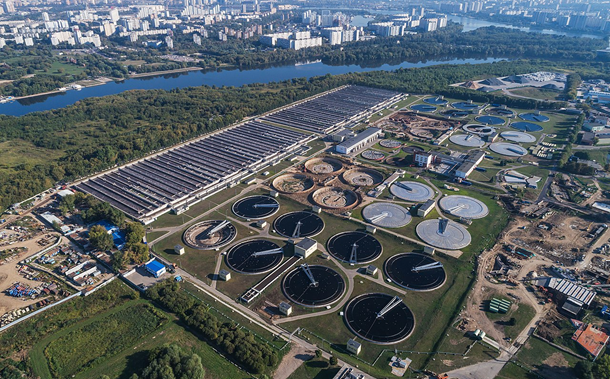Data-Driven Approach to Predict Fire-Resistance Ratings of Timber Columns
Downloads
This study aims to determine whether a data-driven-based approach provides more accurate predictions of timber fire-resistance ratings (FRR) compared to conventional empirical methods. To achieve this, a machine learning framework based on the Deep Belief Network (DBN) was employed. A comprehensive database collected from previously published reports was used to train and validate the DBN model. The model’s predictive performance was benchmarked against traditional empirical equations derived from mechanics-based methods. The comparison demonstrated that the DBN model provided superior accuracy in predicting fire-resistance ratings. Model evaluation was further conducted using the Coefficient of Determination (R²) and Root Mean Squared Error (RMSE), confirming the robustness of the proposed approach. In addition, a parametric analysis was performed to assess the influence of input variables on the output. Results indicated that induced load (IDL) and breadth (BRH) were the most influential parameters, whereas ultimate strength (ULS) and elasticity modulus (ELM) had relatively minor effects. This study highlights the potential of advanced machine learning techniques, particularly DBN, to enhance predictive accuracy in structural fire engineering, offering a significant improvement over conventional calculation methods.
Downloads
[1] Technical Report No. 10. (2018). Calculating the fire resistance of exposed wood members. American Wood Council, Leesburg, United States.
[2] AWC. (2025). ReThink Wood. Mass Timber in North America. American Wood Council (AWC), Virginia, United States. Available online: https://www.awc.org (accessed on September 2025).
[3] O'Neill, B. (2019). Architectural Digest. The world's tallest timber-framed building finally opens its doors. Architectural Digest, New York, United States. Available online: https://www.architecturaldigest.com/story/worlds-tallest-timber-framed-building-finally-opens-doors (accessed on September 2025).
[4] Sumitomo Forestry Group. (2018). New development concept W350 plan for wooden high-rise building. press release. Sumitomo Forestry Group, Tokyo, Japan.
[5] Stoner, M., & Pang, W. (2020). Simulated Performance of Cross-Laminated Timber Residential Structures Subject to Tornadoes. Frontiers in Built Environment, 6, 88. doi:10.3389/fbuil.2020.00088.
[6] Nguyen, T. T., Dao, T. N., Aaleti, S., van de Lindt, J. W., & Fridley, K. J. (2018). Seismic assessment of a three-story wood building with an integrated CLT-lightframe system using RTHS. Engineering Structures, 167, 695–704. doi:10.1016/j.engstruct.2018.01.025.
[7] Bartlett, A. I., Hadden, R. M., & Bisby, L. A. (2019). A Review of Factors Affecting the Burning Behaviour of Wood for Application to Tall Timber Construction. Fire Technology, 55(1), 1–49. doi:10.1007/s10694-018-0787-y.
[8] Anandan, Y. K., van de Lindt, J. W., Amini, M. O., Dao, T. N., & Aaleti, S. (2021). Experimental Dynamic Testing of Full-Scale Light-Frame-CLT Wood Shear Wall System. Journal of Architectural Engineering, 27(1), 4020042. doi:10.1061/(asce)ae.1943-5568.0000443.
[9] Bader, T.K., Ormarsson, S. (2023). Modeling the Mechanical Behavior of Wood Materials and Timber Structures. Springer Handbook of Wood Science and Technology. Springer Handbooks. Springer, Cham, Switzerland. doi:10.1007/978-3-030-81315-4_10.
[10] Nguyen, T. T., Dao, T. N., Aaleti, S., Hossain, K., & Fridley, K. J. (2019). Numerical Model for Creep Behavior of Axially Loaded CLT Panels. Journal of Structural Engineering, 145(1), 04018224. doi:10.1061/(asce)st.1943-541x.0002219.
[11] Girompaire, L., & Dagenais, C. (2024). Fire Dynamics of Mass Timber Compartments with Exposed Surfaces: Development of an Analytical Model. Fire Technology, 60(3), 1477–1501. doi:10.1007/s10694-023-01528-y.
[12] Wiesner, F., Bartlett, A., Mohaine, S., Robert, F., McNamee, R., Mindeguia, J. C., & Bisby, L. (2021). Structural Capacity of One-Way Spanning Large-Scale Cross-Laminated Timber Slabs in Standard and Natural Fires. Fire Technology, 57(1), 291–311. doi:10.1007/s10694-020-01003-y.
[13] Chu, W., Fang, J., Yang, Y., Tao, S., Shah, H. R., Wang, M., & Wang, Y. (2025). Reaction to Fire of the Timber Structure Encapsulated by Multilayer Mortar Coating Under Uniform Thermal Loading. Fire Technology, 61(1), 183–212. doi:10.1007/s10694-024-01622-9.
[14] Malaska, M., Alanen, M., Salminen, M., Jokinen, T., & Ranua, R. (2024). Fire Performance of Steel-Timber Hybrid Beam Section. Fire Technology, 60(4), 2581–2600. doi:10.1007/s10694-023-01471-y.
[15] Wiesner, F., & Bisby, L. (2019). The structural capacity of laminated timber compression elements in fire: A meta-analysis. Fire Safety Journal, 107, 114–125. doi:10.1016/j.firesaf.2018.04.009.
[16] Crielaard, R., van de Kuilen, J.-W., Terwel, K., Ravenshorst, G., & Steenbakkers, P. (2019). Self-extinguishment of cross-laminated timber. Fire Safety Journal, 105, 244–260. doi:10.1016/j.firesaf.2019.01.008.
[17] Aryadi, A., Parung, H., Irmawaty, R., & Amiruddin, A. A. (2024). Investigation of the Mechanical Behavior of Full-Scale Experimental Bugis-Makassar Timber House Structures. Civil Engineering Journal, 10(6), 1765–1787. doi:10.28991/CEJ-2024-010-06-04.
[18] Muszyński, L., Gupta, R., Hong, S. hyun, Osborn, N., & Pickett, B. (2019). Fire resistance of unprotected cross-laminated timber (CLT) floor assemblies produced in the USA. Fire Safety Journal, 107, 126–136. doi:10.1016/j.firesaf.2018.12.008.
[19] Richter, F., Kotsovinos, P., Rackauskaite, E., & Rein, G. (2021). Thermal Response of Timber Slabs Exposed to Travelling Fires and Traditional Design Fires. Fire Technology, 57(1), 393–414. doi:10.1007/s10694-020-01000-1.
[20] ASTM E119-20. (2022). Standard Test Methods for Fire Tests of Building Construction and Materials. ASTM International, Pennsylvania, United States. doi:10.1520/E0119-20.
[21] ICC. (2015). “International Building Code. International Code Council, Washington, D.C., United States.
[22] ANSI/AF&PA NDS-23005. (2005). National design specification (NDS) for wood construction. American National Standards Institute (ANSI), Washington, United States.
[23] Lie, T. T. (1977). Method for Assessing the Fire Resistance of Laminated Timber Beams and Columns. Canadian Journal of Civil Engineering, 4(2), 161–169. doi:10.1139/l77-021.
[24] Gagnon, S., & Pirvu, C. (2011). CLT Handbook: Cross-Laminated Timber. Report Special Publication 52, FPInnovations, Pointe-Claire, Canada.
[25] Tasdemir, S., Altin, M., Pehlivan, G. F., Saritas, I., Erkis, S. D. B., & Tasdemir, S. (2015). Determining fire resistance of wooden construction elements through experimental studies and artificial neural network. Engineering and Technology, International Journal of Chemical, Molecular, Nuclear, Materials and Metallurgical Engineering, 9(1), 209-213.
[26] Cachim, P. B. (2011). Using artificial neural networks for calculation of temperatures in timber under fire loading. Construction and Building Materials, 25(11), 4175–4180. doi:10.1016/j.conbuildmat.2011.04.054.
[27] Naser, M. Z. (2019). Fire resistance evaluation through artificial intelligence - A case for timber structures. Fire Safety Journal, 105, 1–18. doi:10.1016/j.firesaf.2019.02.002.
[28] Zaker Esteghamati, M., Gernay, T., & Banerji, S. (2023). Evaluating fire resistance of timber columns using explainable machine learning models. Engineering Structures, 296, 116910. doi:10.1016/j.engstruct.2023.116910.
[29] Luo, J., Tian, G., Xu, C., Zhang, S., & Liu, Z. (2025). Temperature Field Prediction of Glulam Timber Connections Under Fire Hazard: A DeepONet-Based Approach. Fire, 8(7), 280. doi:10.3390/fire8070280.
[30] Ye, Z., Hsu, S.-C., & Wei, H.-H. (2022). Real-time prediction of structural fire responses: A finite element-based machine-learning approach. Automation in Construction, 136, 104165. doi:10.1016/j.autcon.2022.104165.
[31] Ishtiaq, N., W. Loh, T., & T.Q. Nguyen, K. (2024). Using Machine Learning to Improve Fire Safety of Timber Structures. Wood Industry - Impacts and Benefits, IntechOpen, London Kingdom. doi:10.5772/intechopen.1006895.
[32] Amin, R., Mo, Y., Richter, F., Kurzer, C., Werther, N., & Rein, G. (2024). Correction: Predicting the Average Charring Rate of Mass Timber Using Data-Driven Methods for Structural Calculations. Fire Technology, 61(2), 1023–1024. doi:10.1007/s10694-024-01632-7.
[33] Han, T., Zhang, Z., & Wu, W. (2025). Fire resistance rating prediction of timber-to-steel connections and design optimization informed by explainable machine learning. Engineering Applications of Artificial Intelligence, 156, 111127. doi:10.1016/j.engappai.2025.111127.
[34] Fud, G. (2018). Deep belief network based ensemble approach for cooling load forecasting of air-conditioning system. Energy, 148, 269–282. doi:10.1016/j.energy.2018.01.180.
[35] Rafiei, M. H., Khushefati, W. H., Demirboga, R., & Adeli, H. (2017). Supervised Deep Restricted Boltzmann Machine for Estimation of Concrete. ACI Materials Journal, 114(2), 237–244. doi:10.14359/51689560.
[36] Hao, X., Guo, T., Huang, G., Shi, X., Zhao, Y., & Yang, Y. (2020). Energy consumption prediction in cement calcination process: A method of deep belief network with sliding window. Energy, 207, 118256. doi:10.1016/j.energy.2020.118256.
[37] Nguyen, T. T., Tung, P. T., Tan, N. N., Linh, N. N., & Luc, T. T. (2022). A Study of Factors Affecting GPR Signal Amplitudes in Reinforced Structures Using Deep Belief Networks. Infrastructures, 7(9), 123. doi:10.3390/infrastructures7090123.
[38] Nguyen, T. T., & Dinh, K. (2019). Prediction of bridge deck condition rating based on artificial neural networks. Journal of Science and Technology in Civil Engineering (STCE) - NUCE, 13(3), 15–25. doi:10.31814/stce.nuce2019-13(3)-02.
[39] Li, L., & Betti, R. (2023). A machine learning-based data augmentation strategy for structural damage classification in civil infrastructure system. Journal of Civil Structural Health Monitoring, 13(6–7), 1265–1285. doi:10.1007/s13349-023-00705-5.
[40] Lu, P., Guo, S., Zhang, H., Li, Q., Wang, Y., Wang, Y., & Qi, L. (2018). Research on Improved Depth Belief Network-Based Prediction of Cardiovascular Diseases. Journal of Healthcare Engineering, 8954878. doi:10.1155/2018/8954878.
[41] Nguyen, T. T., & Dinh, K. (2020). An artificial intelligence approach for concrete hardened property estimation. Journal of Science and Technology in Civil Engineering (STCE) - NUCE, 14(2), 40–52. doi:10.31814/stce.nuce2020-14(2)-04.
[42] Nguyen, T. T., Pham Duy, H., Pham Thanh, T., & Vu, H. H. (2020). Compressive Strength Evaluation of Fiber‐Reinforced High‐Strength Self‐Compacting Concrete with Artificial Intelligence. Advances in Civil Engineering, 3012139. doi:10.1155/2020/3012139.
[43] Tanaka, M. (2013). Deep Neural Network. Available online: https://www.mathworks.com/matlabcentral/fileexchange/42853-deep-neural-network14 (accessed on September 2025).
[44] Fischer, A., & Igel, C. (2014). Training restricted Boltzmann machines: An introduction. Pattern Recognition, 47(1), 25–39. doi:10.1016/j.patcog.2013.05.025.
[45] Hinton, G. E., Osindero, S., & Teh, Y. W. (2006). A fast learning algorithm for deep belief nets. Neural Computation, 18(7), 1527–1554. doi:10.1162/neco.2006.18.7.1527.
[46] Xu, F., Fang, Z., Tang, R., Li, X., & Tsui, K. L. (2020). An unsupervised and enhanced deep belief network for bearing performance degradation assessment. Measurement: Journal of the International Measurement Confederation, 162, 107902. doi:10.1016/j.measurement.2020.107902.
[47] Lv, Z., & Qiao, L. (2020). Deep belief network and linear perceptron based cognitive computing for collaborative robots. Applied Soft Computing Journal, 92, 106300. doi:10.1016/j.asoc.2020.106300.
[48] Han, I. J., Yuan, T. F., Lee, J. Y., Yoon, Y. S., & Kim, J. H. (2019). Learned prediction of compressive strength of GGBFS concrete using hybrid artificial neural network models. Materials, 12(22), 3708. doi:10.3390/ma12223708.
- Authors retain all copyrights. It is noticeable that authors will not be forced to sign any copyright transfer agreements.
- This work (including HTML and PDF Files) is licensed under a Creative Commons Attribution 4.0 International License.![]()














